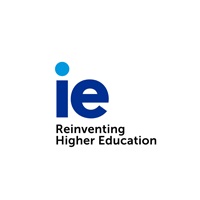Université de Paris
Nanjing Tech University
Amherst College
EIT Digital Master School
Jiangsu Normal University
Jiangsu Normal University
QS World University Rankings – Methodology
In each of our rankings we use a range of measurements as part of our methodology. These can be split into three broad groups.
Each ranking is made up of a different group of measurements, with some being used across several rankings and others unique to one project.
Lens
A group of Indicators which are related to the same theme.
Indicator
A measurement of one aspect of an institution’s performance. Institutions are scored and ranked within indicators and those indicator scores contribute to its overall rank and score.
Metric
A more specific calculation that forms part of an Indicator.
Below you can find the weightings for each performance lens and indicator in this ranking. Weightings are reviewed on an annual basis. Click on each lens or indicator for more detailed information.
LENS AND INDICATORS
|
|
|
|
|
|
|
|
|
|
|
|
|
||
|
|
|
|
|
|
|
|
||
|
|
|
|
|
|
|
|
|
|
|
|
|
||
|
|
|
||
|
|
|
||
|
|
|
|
|
RESEARCH AND DISCOVERY
The Research and Discovery lens measures both an institution's research quality, volume, and its reputation in the academic community.
Institutions who score highly in this lens are likely to be producing high volumes of research output, have research which is widely cited by other academics, and will have built a reputation in the academic community to reflect this.
Academic reputation
The Academic Reputation (AR) indicator measures the reputation of institutions and their programmes by asking academic experts to nominate universities based on their subject area of expertise. Pioneered by QS in 2004, it asks the question: which universities are demonstrating academic excellence?
To answer this we collect and distil the collective intelligence of academics from around the world via our Academic Survey, evaluating nominations for approximately 7000 institutions each year.
The indicator not only illuminates the quality of an institution's research, but also their approach to academic partnerships, their strategic impact, their educational innovativeness and the impact they have made on education and society at large.
The indicator is the centrepiece of almost all of the rankings across the QS portfolio. It carries a weighting of 30% in the flagship QS World University Rankings.
Citations per faculty
The Citations per Faculty (CPF) indicator is a measure of the relative intensity and volume of research being done at an institution.
The indicator is a reflection of the volume of citations being achieved on average by an institution's academic staff. A higher volume of citations suggests that academics at those institutions are publishing in respected journals, engaging in strong collaboration and working on topics that merit a wide readership.
The citation count is divided by the number of individuals in the faculty in order to take into account different sizes of institution.
The Employability and Outcomes
The Employability and Outcomes lens measures how well an institution prepares its graduates for employment, as well as the links it has to industry and its reputation outside of academia.
Institutions who score highly in this lens are likely to have a strong reputation among employers, have a track record of graduates who go on to success in their field, have good rates of graduate employability, and established links with industry partners.
Employer reputation
The Employer Reputation (ER) indicator measures the reputation of institutions and their programmes among employers. We remain the only major ranking to focus on this vital aspect of a student's educational journey.
To measure this we collect the views of employers from around the world via our Employer Survey.
The majority of undergraduate students leave university in search of employment after their first degree, making the reputation of their university amongst employers a crucial consideration.
The indicator is a key part of almost all of the rankings across the QS portfolio. It carries a weighting of 15% in the flagship QS World University Rankings.
Employment outcomes
The Employment Outcomes (EO) indicator measures to what degree institutions can ensure a high level of employability for their graduates, and their record in producing graduates that have gone on to make a meaningful impact on society.
For many students a successful career is the primary goal of their university education and therefore is important to measure an institution's track record in this field.
Equally an institution who produces graduates who go on to achieve success in fields such as the arts, politics, business etc. can point to their role in the development of those careers.
Learning Experience
The Learning Experience lens aims to reflect the overall learning environment provided by a higher education institution to its students, through the level of support it offers all its students regardless of socioeconomic background.
Institutions who score highly in this lens are likely to have more academic staff resources available to students and to hire high quality research staff.
Faculty student ratio
The Faculty-Student Ratio (FSR) indicator is a measure of the number of academic staff that an institution has to teach its students.
The more academic staff resources are made available to students, for teaching, supervision, curriculum development, and pastoral support, the better the learning experience should be.
The indicator is calculated by dividing the number of faculty staff by the number of students.
Global Engagement
The Global Engagement lens aims to reflect the overall internationalization of higher education institutions, measuring an institution’s international outlook in terms of foreign students, staff and its research links outside its own location.
Institutions who score highly in this lens are likely to provide a more culturally diverse experience to students and staff, and be more connected to international networks of academic mobility and research.
International Faculty Ratio
The International Faculty Ratio (IFR) indicator looks at the ratio of international faculty staff to overall staff.
An institution attracting a sizeable population of international academics sees benefits in terms of its research and teaching diversity and collaborations.
In addition if an institution is attracting a sizeable number of overseas staff it suggests that it has a positive reputation and is viewed as a good place to work.
Institutions with high numbers of international staff can also benefit from wider international research networks due to the connections that their international academics bring with them, so a high score in this indicator hints at an open and collaborative academic environment.
International Research Network
International Research Network (IRN) is a measure of an institution's success in creating and sustaining research partnerships with institutions in other locations.
The indicator measures how diverse and rich an institution's research network is by looking at the number of different countries represented, and whether these relationships are renewed and repeated.
We only consider sustained partnerships, defined as those which result in three or more joint papers published in a five-year period.
International Student Diversity
The International Student Diversity (ISD) indicator looks at the ratio of international students to overall students as well as the diversity of nationalities that those students are from.
The indicator is an evolution of the International Student Ratio (ISR) indicator, with the aim of measuring not only the size of an institution's international student body, but also how successful the institution is at attracting students from a wide range of different countries and backgrounds.
If an institution is attracting a sizeable population of international students from a variety of nationalities this has benefits in terms of networking, cultural exchanges, a more diverse learning experience and alumni diversity.
In addition, if an institution is attracting a sizeable number and diverse range of international students it suggests that it has a positive reputation and is viewed as a good place to study.
This can be reinforced if graduates return to their home country with a positive experience to relay to future prospective students.
International Student Ratio
The International Student Ratio (ISR) indicator looks at the ratio of international students to overall students.
If an institution is attracting a sizeable population of international students this has benefits in terms of networking, cultural exchanges, a more diverse learning experience, and alumni diversity.
In addition if an institution is attracting a sizeable number of overseas students it suggests that it has a positive reputation and is viewed as a good place to study.
This can be reinforced if graduates return to their home country with a positive experience to relay to future prospective students.
Sustainability
Sustainability provides students with a unique lens on which institutions are demonstrating a commitment to a more sustainable existence.
Sustainability
The Sustainability (SUS) indicator highlights which institutions are demonstrating a commitment to a more sustainable existence, and encompasses a variety of factors across environmental, social and governance (ESG).
This includes everything from environmental projects on campus, through to diversity initiatives, institutional governance, and the impact of academic research across the UN's 17 sustainable development goals (SDGs).
It evaluates the social and environmental impact of universities as not only centres of education and research, but also as major employers.
Sustainability is an increasingly important issue for students when picking a study destination and QS is proud to be the first major university ranking provider to include it as an indicator in our core rankings.
Trusted by students, employers, and schools around the world, the QS World University Rankings is compiled using six simple metrics that effectively evaluate university performance. Explore the complete methodology behind the compilation of the rankings here.
Discover the world's best universities with the QS World University Rankings.
QS Stars: Methodology
What criteria does QS Stars use when rating universities, and why?
There’s been much discussion around what attributes form a world-class university, particularly with the growing popularity of university rankings and the data used to assess universities worldwide.
The criteria used in rankings and other assessments is key: each university is different and finding commonalities can be a challenge. QS Stars is different: we rate universities rather than rank them. To make the ratings process as straightforward and fair as possible, QS Stars methodology is based on several critical categories that assess universal, core strengths – including some that are overlooked in other university assessments and rankings.
Research
Indicators considered here include assessments of research quality amongst academics, productivity (i.e. number of papers published), citations (i.e. how recognized and referred to those papers are by other academics) and awards (e.g. Nobel Prizes or Fields Medals).
Teaching
A key role of a university is the nurture of tomorrow's finest minds, inspiring the next generation of potential research academics. Typical indicators in teaching quality assessments are collation of student feedback through national student surveys, further study rate and student faculty ratio.
Academic Development
This category is an alternate to the Research Category. The Academic Development category looks at institutions' efforts to enhance students' learning experience outside of the classroom. Some of these efforts could include: Number of faculty office hours that academic faculty dedicate every week for students to discuss assignments. In this category we also look at the availability of academic learning centers for students - as well as -teaching and research assistantship opportunities.
Employability
Graduate employability encompasses more than academic strength, focusing on ‘work-readiness’ - the ability to work effectively in a multi-cultural team, to deliver presentations, to manage people and projects. Common indicators in this area are surveys of employers, graduate employment rates and careers service support.
Internationalization
Here, effective indicators could be the proportion of international students and staff, the numbers of exchange students arriving and departing, the number of nationalities represented in the student body, the number and strength of international partnerships with other universities and the presence of religious facilities.
Facilities
University infrastructure is an indicator which enables students to know what to expect from their university experience. Indicators such as sporting, IT, library and medical facilities, as well as the number of students societies are considered within this criterion.
Online/Distance learning
This category looks at various indicators such as student services and technology, track record, student faculty engagement, student interaction, commitment to online and reputation of the university.
Social Responsibility
Engagement measures how seriously a university takes its obligations to society by investing in the local community as well as in charity work and disaster relief. It also analyses the regional human capital development and environmentally awareness.
Innovation
Innovation, the output of the universities activities and findings to economy, society and culture, has become increasingly relevant for universities.
Arts & Culture
Effective indicators are the number of concerts and exhibitions organized by the institution, the number of credits and cultural awards and cultural investment.
Inclusiveness
This area looks at the accessibility of the university to students, particularly at scholarships and bursaries, disability access, gender balance and low-income outreach.
Specialist Criteria
Excellence in a narrow field is as valid a claim to world-class status as competence in the round. These criteria are designed to extend credit where it's due. This category looks at accreditations and discipline rankings.
For more in-depth information about QS Stars, visit the QS Intelligence Unit website.
QS Stars is a rating system that provides a detailed look at an institution, enabling you to identify which universities are the best in the specific topics that you care about, like program strength, facilities, graduate employability, social responsibility, inclusiveness, and more.
QS Stars understands that universities are different to one another and therefore need to be assessed on a range of categories that recognize distinct strengths. It also recognizes that each student is looking for something different, and not all universities – even the highest ranked institutions – suit every student.
Using QS Stars when searching for your future program will help you understand which universities have performed well against a comprehensive list of indicators, allowing you to match your interests to the universities that are strong in the topics that matter to you.
In the methodology used for QS Stars, universities are evaluated in dozens of indicators across at least eight categories. After the assessment, universities are awarded with an overall Star result which ranges from 0 to 5+ Stars, depending on the number of points achieved through the evaluation.
Is It Worth Studying a Humanities Subject?
The question of whether to study something you love, or something practical is one that generations of students have asked. If you’re lucky, what you love will be something also practical, but if you’d love to study a humanities subject at degree level, but are worried about your future career prospects, you aren’t alone. We went to hear what some of the top minds in education have to say on this topic, as they discuss the future of the liberal arts at the QS Reimagine Education conference.
The drive away from humanities courses
According to Dr Jenny Bergeron, the Director of Educational Research and Evaluation at Harvard University, the fastest growing majors are in computer science and applied mathematics, due to their practicality and high graduate wages.
The 1970s and the early 80s saw the greatest fall in humanities degrees, and since then people have been increasingly deterred from humanities degree subjects. As Dr Bergeron revealed, this is for several reasons: the students’ parents’ worries about future employment after graduating with a humanities degree, the perception of humanities courses being particularly intensive and a general anxiety to find graduate jobs; in particular, well paid ones that will offset student debt. Dr Bergeron suggested that students wish to graduate with more ‘tangible’ degrees, as opposed to humanities subjects, which generally teach you transferrable skills rather than training you for a specific role.
So, why should you study a humanities course?
With people seemingly moving away from studying humanities, why should you still study a liberal arts degree? In response to this, Dr David Steiner, the Executive Director of the Institution Policy, School of Education at John Hopkins, said “the real question is whether we can find an argument for their existence”.
Dr Steiner explained “creativity is at the heart of the humanities,” and teaches students “what counts most about being human”. Dr Bergeron also said that the “skills developed by humanities subjects are the hardest to automate”, meaning that as the job market sees the results of technological advancement, there should be a greater demand for the ‘human skills’ learnt in humanities degrees.
Dr Steiner said that it’s important to consider what you want to get out of a degree, whether it’s a higher salary after graduation or to expand your knowledge or be inspired – or both. Although the initial salary difference between humanities and STEM graduate salaries is substantial, he said, there is “no difference in graduate salaries after 10 years”.
Encouraging students to study humanities subjects
“In the US there’s an incredible drive to relevance. We have dumbed down the humanities in order to increase enrollment” says Dr Steiner, “the harder the course, the higher the enrollment level”.
To demonstrate this, he gave several examples; the University of Texas’s ‘study of great books’ course gained popularity once the university increased the course’s difficulty, eventually having over 500 applications for only 100 places. “If the humanities want to survive”, Dr Steiner explained, “they need to stop pandering and stop dumbing down”.
He also stated that there is a recent tendency to shy away from studying the past and a general belief that we should only be future looking, but “we were not born without an inheritance and humanities is the study of this inheritance”.
**
Why did you choose to study a humanities subject? Let us know in the comments below.
Should you study a liberal arts degree? We find out what the experts at the QS Reimagine Education conference say.



